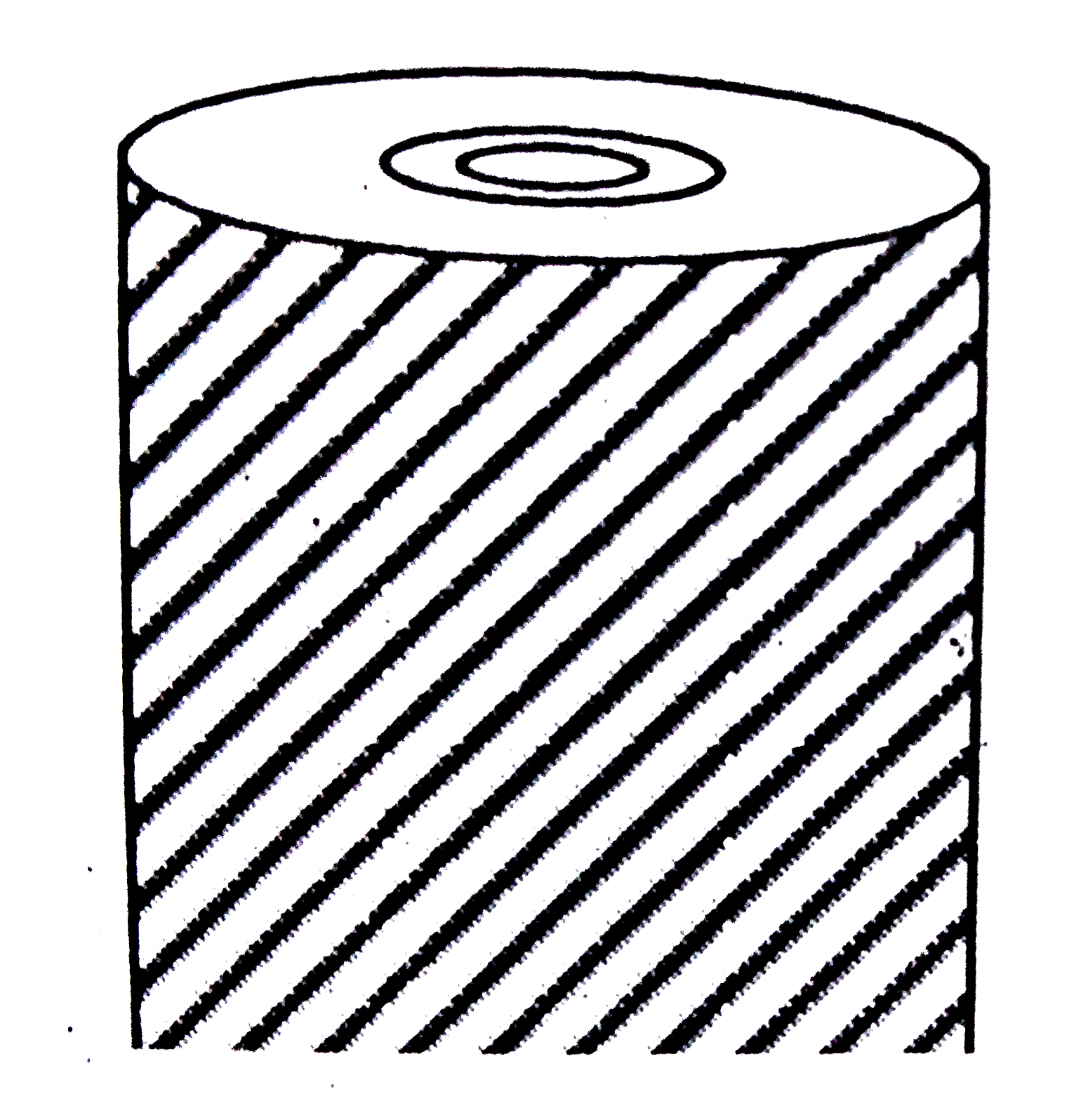The current density is a solid cylindrical wire a radius R, as a function of radial distance r is given by J(r)=J0(1−rR) . The total current in the radial regon r = 0 to r=R4 will be :
5J0πR232
5J0πR296
3J0πR264
J0πR3128
The correct Answer is:B
di=JdA=J0(1−rR)2πrdr⇒I=r=R4∫r=0J0(1−rR)2πrdr=J05πR296

Topper's Solved these Questions
Similar Questions
A current is flowing through a cylinderical conductor of radius R, such that current density at any cross-section is given by J=J0(1−rR), where r is radial distance from axis of the cylinder .Calculate the total current through the cross-section of the conductor.
View Solution(a) The current density in a cylindrical wire of radius R=2.0mm is uniform across a cross section of the wire and is J=2.0×105A/m2. What is the current through the outer portion of the wire between radial distances R/2 and R?
(b) Suppose, instead, the current density through a cross section varies with radial distance r as J=ar2, in which a=3.0×1011A/m4 and r is in meters. What now is the current through the same outer portion of the wire?
View Solution
Knowledge Check
A cylindrical wire of radius R has current density varying with distance r form its axis as J(x)=J0(1−r2R2) . The total current through the wire is
AπJ0R22B2πJ0R23C4πJ0R23Dnone of theseCurrent density in a cylindrical wire of radius R is given as J=⎧⎪⎨⎪⎩J0(xR−1) for 0≤x<R2J0xR for R2≤x≤R . The current flowing in the wire is :
A724πJ0R2B16πJ0R2C712πJ0R2D512πJ0R2The current density in a wire of radius a varies with radial distance r as J=J0r2a, where J0 is a constant. Choose the incorrect statement.
ATotal current passing through the cross-section of the wire isI=πJ0a32BTotal current passing through the cross-section of the wire isI=3πJ0a32CThe field at a distance r gt a is B=μ0J0a34rDThe field at a distance r gt a is B=μ0J0a34a
A solid ball of radius R has a charge density ρ given by ρ=ρ0(1−rR)for0≤r≤R The electric field outside the ball is :
View SolutionThe current density across a cylindrical conductor of radius R varies in magnitude according to the equation J=J0(1−rR) where r is the distance from the central axis. Thus, the current density is a maximum J0 at that axis (r = 0) and decreases linearly to zero at the surface (r = R). Calculate the current in terms of J0 and the conductor 's cross - sectional area A=πR2.
View SolutionThe mass density of a planet of radius R varie with the distance r form its centre as ρ(r)=p0(1−r2R2). Then the graviational field is maximum at :
View SolutionThe current density in a cylindrical conductor of radius R varies according to the equation J=J0(1−rR), where r=distacnce from the axis. Thus the current density is a maximum J0 ata the axis r=0 and decreases linealy to zero at the srface r=2√π. Current in terms of J0 is given by n(J06) then value of n will be.
View SolutionCurrent density in a cylindrical wire of radius R is gives as
⎧⎪⎨⎪⎩J0(XR−1)for 0≤x<R2J0XR forR2≤X≤R . The current flowing in the wire is
View Solution

